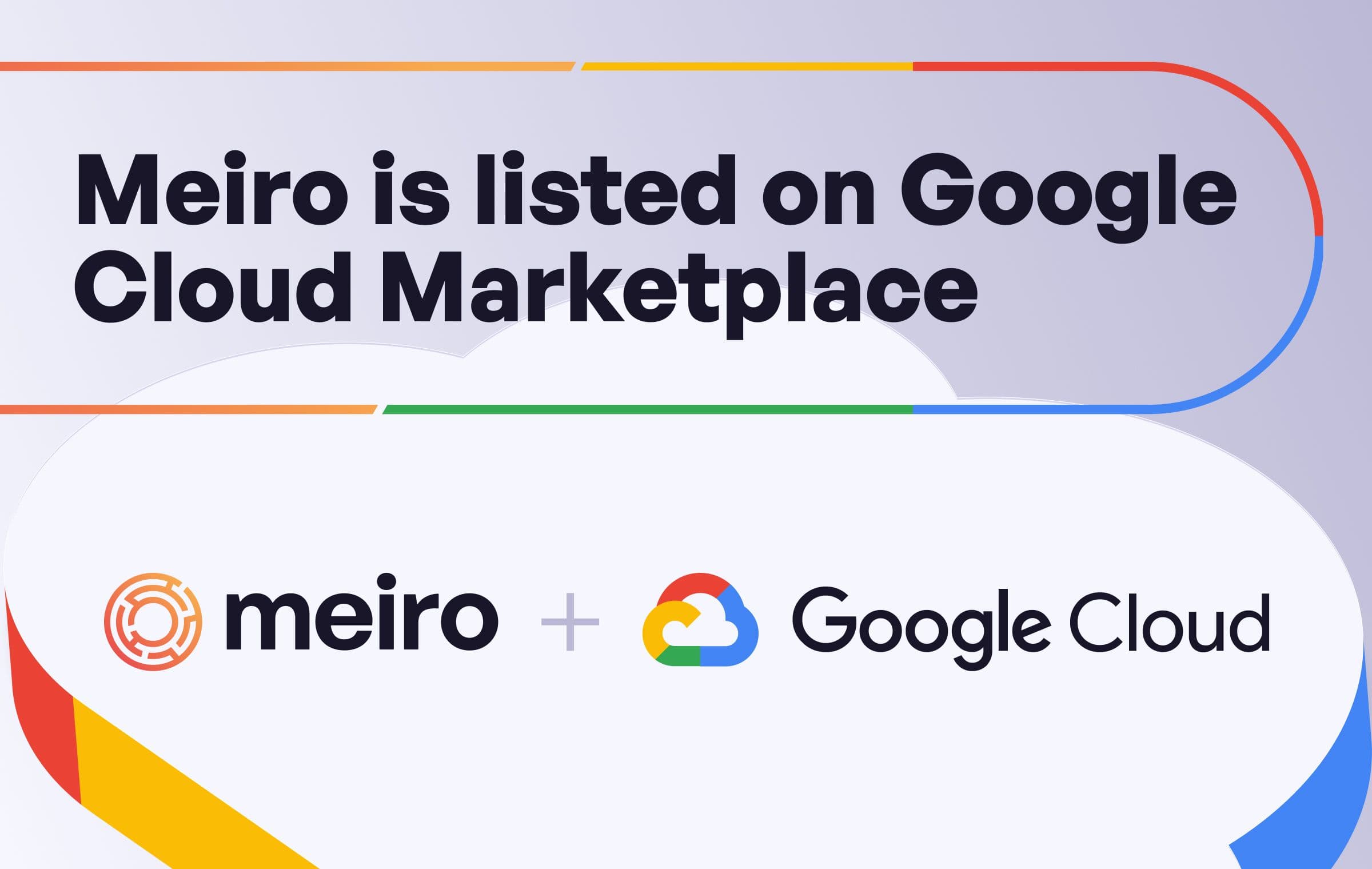Case study: How a CPG brand solved the third-party cookie problem
This is last part of a three-part blog series that covers all that you need to know about cookies and the third-party cookie ban titled “Cookies 101: Bulletproofing for the 3rd party cookie ban”.

CPO | Co-Founder of Meiro
In this final part of the series, Harish from Ameex shares a case study on how their client, a Consumer Packaged Goods (CPG) brand, tackled the challenges posed by third-party cookie deprecation. This case study details how 80% of their audience was based on third-party cookies, the dip in ad performance they experienced, their transition from a DMP to a CDP, and the adoption of a Direct to Consumer (D2C) strategy along with first-party data collection. Watch the full recording here or read the article below.
See the other 2 blog post in this series:
- How does the web cookies work & The future of third party cookies
- Link to how Meiro CDP solves the third-party cookie problem
Our other relevant cookie-related blog posts
About Harish & Ameex
Harish Rajendran is a data scientist focusing on marketing analytics, attribution, and data strategies. Ameex is an IT services company with over 600 employees, established in 2007. Ameex started with custom application development and expanded into mobile applications and e-commerce in 2010. By 2012, they moved into marketing analytics and user experiences, and in 2017, they ventured into AI and ML, specializing in chatbots, personalization, and marketing automation. Today, Ameex helps companies with their digital transformation and data strategies.
Intro to Ameex’s CPG brand cookie case study
This case study is focused on a Consumer Packaged Goods (CPG) brand specializing in baby formula nutrition. Ameex began working with them in 2019 when 80% of their purchase marketing budget was allocated to display ads, search ads, and YouTube, with 20% spent on Facebook ads. Their primary objectives were brand awareness (60%), retail sales (20%), website engagement (10%), and Direct to Consumer (D2C) sales (10%).
1. 80% of the CPG Brand’s Audience Was Based on Third-Party Cookies
At that time, 80% of their audience data came from third-party cookies. They purchased data from third-party vendors to target competitors’ customers. Retargeting constituted 50% of their audience strategy, with minimal first-party data and website traffic.
With the impending deprecation of third-party cookies, the brand realized that 80% of their audience would become non-targetable. They were using Salesforce Crux DMP for audience management and suppression, which added complexity.
Learn more about how switching to a CDP can streamline your data management and targeting efforts: The Benefits of CDP vs DMP.
2. Their Display Ads Were Not Performing Well in 2019
In 2019, 80% of their marketing budget was spent on display ads, but the traffic quality was poor, with over 50% bounce rates. The cookie duplication issue and the ineffective targeting led to internal discussions about enhancing their first-party data strategy and moving away from DMPs.
3. They Wanted to Move Away from DMPs
By 2020, the brand decided to phase out DMPs due to their declining value and issues with retargeting. They recognized the need for a D2C strategy and first-party data collection.
4. They implemented a D2C strategy
In 2020, the brand shifted 20% of its display ad budget to social media ads and implemented a D2C strategy using Shopify. It also developed a mobile app for its target audience (moms) and a robust email marketing strategy through SFMC. Finally, it initiated a social influencer program.
5. Collecting and connecting first-party data
So, in 2020, they implemented comprehensive first-party data collection solutions. Now they have a website, a B2C shop, an app, an email marketing system, and an influencer program. Despite this, challenges persist. With more channels, more teams get involved. You have a platform team managing web and mobile, a marketing team handling email and social influencer programs, possibly using affiliate tracking software like Trackdesk, and a brand team managing ads. Sales have improved, with 3 million sales happening, but they are recorded in separate databases.
First-party data audiences are now distributed across different platforms. They have audiences from mobile app, B2C Shopify store, and social influencer programs.
6. The Orchestration Challenge and Solution
The main challenge now is orchestration—connecting with everyone effectively. First-party data is no longer the issue; they are receiving rich data. However, with updates like Facebook and iOS changes, conversion tracking is affected. Campaign optimisation based on conversions is problematic, and CPAs are not ideal.
The Solution - Precision Marketing. In 2021, the focus shifted to Precision Marketing. The goal was to collect data, stitch it together, and target the right people at the right time with the right message. Unifying data is crucial. By bringing data together, creating profiles, segmenting users, and building customer journeys, businesses can achieve this. That's when we started experimenting with CDP solutions.
7. Adoption of CDP Solution
Several projects were initiated with Meiro CDP, focusing on user segmentation based on cross-channel interactions and social integration on first-party data targeting. The aim was to build rich audiences, understanding their behaviours. They tracked who visited the website, who used the mobile app, who made purchases, and who responded to emails. With this stitched-together data, they started seeing success. For example, when a mother updates her delivery or birth date, the brand can track her interactions and target her with relevant emails and content.
Conclusion
By recognizing the limitations and impending challenges of third-party cookie deprecation, the brand proactively shifted their focus towards a Direct to Consumer (D2C) model and enhanced their first-party data collection efforts.
Through the adoption of Customer Data Platforms (CDPs) like Meiro CDP, the brand successfully unified their data across multiple channels, enabling precise targeting and personalized marketing. This strategic move not only mitigated the risks associated with third-party data loss but also improved customer engagement and marketing effectiveness.
By integrating various data sources such as their website, mobile app, and social influencer programs, the brand was able to create detailed user profiles and deliver relevant content to their audience. This holistic approach to data management and precision marketing allowed the brand to maintain a competitive edge and drive significant growth in their digital transformation journey.
Ultimately, this case study serves as a testament to the power of first-party data and the importance of a well-executed D2C strategy in navigating the complexities of modern marketing. Brands that embrace these strategies will be better positioned to build stronger relationships with their customers and achieve sustainable success in the digital age.
Table of contents
About Harish & Ameex Intro to Ameex’s CPG brand cookie case study 1. 80% of the CPG Brand’s Audience Was Based on Third-Party Cookies 2. Their Display Ads Were Not Performing Well in 2019 3. They Wanted to Move Away from DMPs 4. They implemented a D2C strategy 5. Collecting and connecting first-party data 6. The Orchestration Challenge and Solution 7. Adoption of CDP Solution ConclusionUnleash the full potential of your customer data. Let’s talk!
Spread the love:

Pavel stands behind all the smooth operations and business growth. You would run into him in the queue at airports rather than in one place. Besides that, he enjoys chess, boxing, and history.


